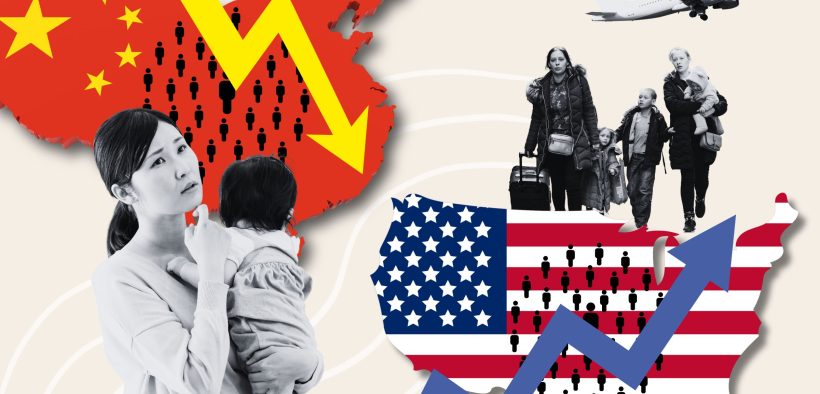The 2050 Population Data That Could Ruin Communist Century…
Share

China’s unfolding demographic crisis casts a shadow over President Xi Jinping‘s mid-century ambitions.
“Beijing’s political ambitions are based on exaggerated economic forecasts, which are based on exaggerated demographic figures. The dire demographic outlook makes both China’s economic and military goals impossible to achieve,” University of Wisconsin-Madison researcher Fuxian Yi told Newsweek.
At the beginning of his first term, Xi set the goal of achieving the “great rejuvenation of the Chinese nation” by 2049, the centennial of the People’s Republic of China. The country made great strides toward this goal over the next decade. Millions escaped poverty and Beijing positioned itself at the center of global finance, and diplomacy.
But the world’s second-largest economy has had a bumpy post-pandemic recovery, weighed down by low domestic demand, an ongoing real estate market slump, and high levels of public debt. Economists say China now faces the specter of the middle-income trap.
The long-term economic outlook of China, like neighbors Japan, South Korea and Taiwan, is threatened by its low birth rates and an aging workforce.
Unlike in the U.S., where births are also under the replacement rate of 2.1 children per woman, East Asian countries remain hesitant to fully open their doors to immigration in order to offset future manpower shortages. And so far, new policies and hundreds of billions of dollars poured into measures like childcare and fertility treatment have failed to reverse the trend.
Last year marked the seventh straight year that births dipped and the second year in which more people died than were born.
The U.N. forecasts China’s population, now the world’s third largest after India, will shrink from 1.4 billion to 1.31 billion by 2050. Yi argues that the prediction is too optimistic; he believes the population already stands at 1.3 billion and will reach about 1 billion by mid-century—if its fertility rate can stabilize at 0.8 expected births per woman.
Meanwhile, the proportion of Chinese people age 65 and above will rise from about 15 percent to 35 percent by 2050, he said, straining public resources and impacting productivity.
China’s Foreign Ministry did not immediately respond to Newsweek‘s written request for comment.
Xi’s mid-century aims include turning the Chinese armed forces, known as the People’s Liberation Army, into a “world-class” fighting force, capable of dominating not only its immediate region, but also outfight United States around the world. It is already the world’s largest military in pure number terms; China’s navy has most warships, its formidable rocket force is armed with nuclear warheads, and the Pentagon has already described it as America’s “pacing threat” this century.
However, integral to China’s rejuvenation” is unifying with Taiwan, with force if necessary. The Chinese Communist Party in Beijing considers the democratic island an inseparable part of its territory despite never having ruled there.
Xi is believed to have set 2027 as a target by which Chinese forces should be capable of taking Taiwan. However, this would be disastrous not only for Taiwan’s population, but also for that of the invading country.
Yi, the researcher, argued recently in The Diplomat magazine that a decline in birth rates in Russia coincided with slowing economic growth following Western sanctions over its annexation of Crimea in 2014. Births per year dropped from over 1.9 million in 2015 to 1.4 million in 2021.
Russian births fell by another 140,000 in 2023, the year after its leader, President Vladimir Putin, ordered the invasion of Ukraine.
If Beijing launches a war against Taiwan, there will be severe repercussions that will, as in Russia, impact people’s decision to have children, Yi wrote.
Even if China pulls off a swift victory—far from a certainty—it’s sure to be heavily sanctioned by the West, and the fallout, including lower demand for its exports and rising unemployment, will further crimp its birth rate and economic vitality.
“China needs to face up to its real demographic crisis, conduct strategic contraction, improve relations with the United States, and work with the U.S. to maintain the existing international order, which is a win-win for China and the West,” Yi said.)})



















